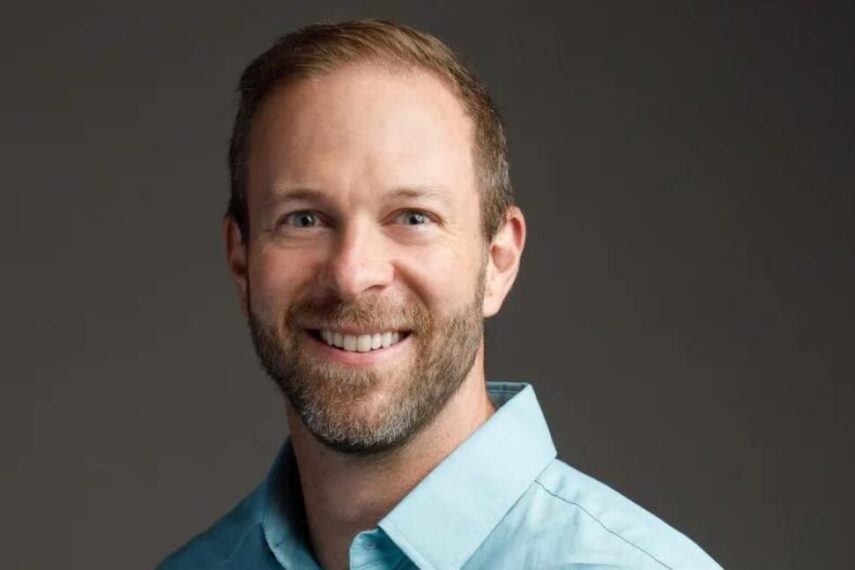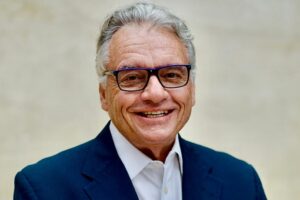Ask the Expert: An Interview with Yale’s Dr. Brian Fuehrlein

In this interview with one of our nation’s experts on emergency and addiction medicine as well as addiction psychiatry, we hear from Yale University’s Brian Fuehrlein, M.D., Ph.D., an associate professor of psychiatry and director, Psychiatric Emergency Room, VA Connecticut Healthcare System.
Guest Author Mark S. Gold, MD

Mark S. Gold, MD, is an author, inventor, and mentor who has had over 1,000 peer-reviewed publications since beginning his academic career at the University of Florida College of Medicine and Yale University School of Medicine in the 1970s. He is best known for developing the pioneering translational laboratory to human research methods of discovery for addiction and psychiatry. He has over 30,000 academic research citations and an H index of 93. He has made impactful contributions to psychiatry, neuroendocrinology, radiation oncology, transplant biology, orthopedic surgery, public health, pain, obesity medicine, and substance use disorders. Gold was a founding member of the McKnight Brain Institute.
Addiction Expert says Eliminating Stigma is Crucial to Saving Lives
In my first two posts, I discussed what we can all do to reduce addiction and deaths caused by opioid and substance use disorders (SUDs) crisis. The first focused on shame and stigma, and the second on false beliefs and misconceptions about what can be done right away to help.
In this interview with one of our nation’s experts on emergency and addiction medicine as well as addiction psychiatry, we hear from Yale University’s Brian Fuehrlein, M.D., Ph.D., an associate professor of psychiatry and director, Psychiatric Emergency Room, VA Connecticut Healthcare System.
He is a national expert at the front lines of this crisis on what we are doing, what we should be doing, and what we could do better.
Gold: If you could do one thing to save the lives of SUD patients, what would you do?
Fuehrlein: Eliminate stigma. Stigma prevents people from seeking help, creates roadblocks to help when patients seek it and contributes to our attempts to punish away the disease. Stigma also likely contributes to why there are so few medication options. If we could eliminate stigma and view substance use disorders in the same light as hypertension, cancer, and heart disease, it would go a long way toward saving lives.
Gold: Anything else?
Fuehrlein: We need more and better medication options for all substance use disorders. We have excellent medications for opioid use disorder (OUD), yet overdoses hover near all-time highs. We have a few medications for alcohol use disorder (AUD) that are moderately successful, and we have no medications for any other SUD. Compare this to the plethora of medication options for most other illnesses.
Detoxifying and Treating Patients with OUDs in the Emergency Department
Gold: Tell me about your procedures with the person who overdoses on opioids in the emergency department and how you convince patients and their families to put them on Suboxone and become engaged in their treatment.
Fuehrlein: We have a free-standing psychiatric emergency room at the VA (Veterans Administration) in Connecticut. We can observe patients longer than the typical six hours in a medical emergency room. We are even able to observe patients for 48 hours or more to stabilize them prior to discharge. Our typical process for a patient with opioid use is we monitor patients for symptoms of opioid withdrawal, typically using the clinical opiate withdrawal scale (COWS).
By discussing with the patient and using COWS as a guide, we initiate buprenorphine when appropriate. We default to the standard induction protocol (4mg followed by 4mg soon thereafter, with 8mg on day one and 16mg on day two). We also have access to a walk-in detox and stabilization clinic (DASS), where discharged patients can be followed up in DASS the next day. Through the ER and then DASS, patients are connected to the outpatient team for continued maintenance. We rarely detox patients only. We encourage all patients to be initiated and maintained on buprenorphine.
Why People Drop Out of Treatment
Gold: If treatment is so good, why do most patients drop out?
Fuehrlein: This is the million-dollar question. Being able to maintain patients in treatment has always been challenging with SUDs. I suspect the primary reason is for many patients, the craving to use is more powerful than the efficacy of the treatments (thus the need for additional research and new medication options). Hence, they drop out of treatment to relapse. For others, it is an access or cost issue. And for others, the stigma of being on medication may impact their lives negatively. Some may lack transportation to the clinic. Many have comorbid mental health conditions that contribute to their ability to stay connected to treatment. Others have chaotic home environments, which contribute.
Hope is Just a Phone Call Away
866-922-1350Twelve-Step and Similar Meetings Important to Success
Gold: If treatment should continue for 1.5 to 2 years with Suboxone, do many succeed? Why?
Fuehrlein: It is clear from the data the longer people are engaged in treatment and on medications, the better the outcome. At some point, there will be a solid foundation of recovery and sober time, and coming off medication slowly may be indicated. These are not necessarily lifetime medications.
But the most important variable is a solid foundation of recovery. Daily NA/AA (narcotics anonymous and alcoholics anonymous) meetings, having a sponsor, and working the 12 steps provide needed support while considering stopping maintenance medications. Without a solid foundation in recovery, removing the medication becomes more risky.
Why Substance Dependence Continues as a Severe Problem
Gold: Why does the substance dependence problem seem to be getting worse now?
Fuehrlein: The human brain has increased susceptibility to strong drugs of abuse. Over the decades, society has developed stronger and more addictive drugs to drive the financial drug trade and create more customers. These stronger opioids bring worsened addictions, intense withdrawals, and increased overdose deaths. Unfortunately, this tragedy overshadows the significant gains we have made in improving treatment.
New Hope for Future Treatments
Gold: Where do you see the current situation in the future?
Fuehrlein: Our group here at Yale, NIDA (National Institute on Drug Abuse), and other researchers are working to make treatment better for people with SUDs. There is so much active research into novel treatments such as psychedelics, neuromodulation, and other alternative therapies. We seem on the verge of neuroscience breakthroughs that could change the landscape, making treatment better and offering some hope of a cure.
References
Jaeger S Jr, Fuehrlein B. Buprenorphine initiation to treat opioid use disorder in emergency rooms. J Neurol Sci. 2020 Apr 15;411:116716. doi: 10.1016/j.jns.2020.116716. Epub 2020 Feb 6. PMID: 32097813.
Lee YK, Gold MS, Blum K, Thanos PK, Hanna C, Fuehrlein BS. Opioid use disorder: current trends and potential treatments. Front Public Health. 2024 Jan 25;11:1274719. Doi: 10.3389/fpubh.2023.1274719. PMID: 38332941; PMCID: PMC10850316.
Lee YK, Gold MS, Fuehrlein BS. Looking beyond the opioid receptor: A desperate need for new treatments for opioid use disorder. J Neurol Sci. 2022 Jan 15;432:120094. doi: 10.1016/j.jns.2021.120094. Epub 2021 Dec 16. PMID: 34933249.






